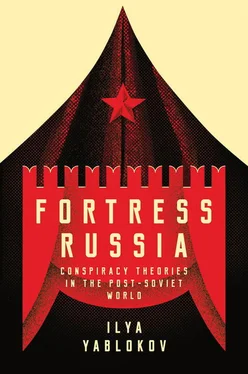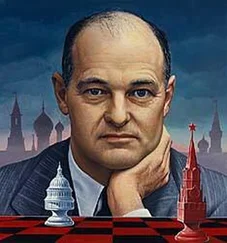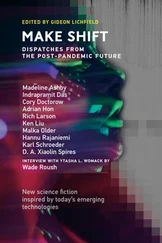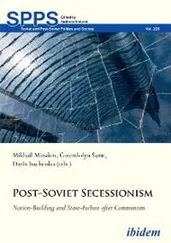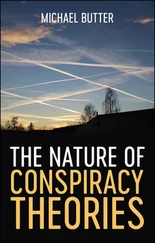‘The White Ribbon Aims to Shed Blood’
Street protests and activism after the parliamentary elections in December 2011 triggered a wave of conspiracy speculations about a possible colour revolution supported from abroad. This notion had been fostered by pro-Kremlin intellectuals since 2005 and they could now proclaim that it had become a very real danger. Nikolai Starikov described the events in Moscow as a well-tested plan for revolution which had been designed in Washington to establish friendly political regimes in the post-Soviet nations and plunge them into chaos:
The [foreign] partners and their Fifth Column are now trying to promote in Russia the same scenario which they have repeatedly tested in the post-Soviet space of Kyrgyzstan, Georgia, Ukraine – it has been the same everywhere. Elections and cries about their falsification by the authorities, [then] people in the streets, [then] an orange revolution (insurrection), [then] total control of the political life in this country by Washington. (Starikov, 2011f)
One of the protesters’ symbols was a white ribbon; it was used to emphasize the unity of those discontented with the election results (El Mariachi, 2011). Shortly after the protests, Starikov and another pro-Kremlin blogger, Dmitrii Beliaev, contended that the white ribbon was proof of a ‘colour revolution’, and that this was a plan invented in the USA to provoke clashes with the authorities and bring about the deaths of Russian protesters. According to Beliaev, the website Belaia lenta ( The White Ribbon ) had been registered in the USA two months before the Russian parliamentary elections; this was proof, he argued, of a foreign plan to provoke post-electoral unrest in Russia. He also alleged that just before the website was registered, Aleksei Navalny, a prominent Russian opposition leader, travelled to London where he purportedly received instructions from Boris Berezovskii, while another leader of the opposition, Boris Nemtsov, travelled to the USA supposedly to get approval for the plan. After the December elections, Navalny and Nemtsov urged people to join street protests; Beliaev claimed that ‘the ideological backup’ for these actions was provided by individuals with dual citizenship. He pointed out that several popular media personalities – the inventor of the white ribbon, writer Arsen Revazov; Dem’ian Kudriavtsev, the then general director of the Kommersant publishing house; and another well-known blogger, Anton Nossik – held Israeli passports. Another person mentioned in Beliaev’s post, Konstantin von Eggert, was a former BBC journalist and member of the Royal Institute for International Affairs in London, and had previously had close connections to Great Britain; Beliaev took this as an indication of his involvement in anti-Russian subversive activity (Beliaev, 2011).
When the Moscow authorities refused permission for an official opposition rally, and opposition leaders called on people to hold unauthorized protests, Starikov and Beliaev warned their readers that the real aim of the white ribbon movement was to shed blood on the streets of Moscow and try to blame the government for the violence:
On 10 December, people gather not to express [their] protest, but solely to shed blood and infuriate the mob, to cause disorder. This has happened in many countries in the Middle East, and the same happened one hundred years ago in Russia. ‘The White Ribbon’, according to the intentions of organizers, should become red. Then this symbol has a completely different meaning. (Starikov, 2011a)
The peaceful atmosphere of the first rally against the election results, held on Moscow’s Bolotnaia Square, belied the warning of bloodshed. However, the state leadership chose another tactic to undermine the opposition: refocusing the criticism from rigged elections to Putin himself. Putin’s own comments on the white ribbons were extremely pejorative, but they initially backfired. At a press conference held on 15 December he compared the ribbons to condoms, which was meant to defame the protesters’ symbol (Elder, 2011b). These comments triggered a wave of anti-Putin criticism that was expressed on protesters’ banners during the next demonstration, held on 24 December. Yet Putin’s comments did have an important influence on the course of the electoral campaign, and inadvertently supplied the pro-Putin intellectuals with further arguments to link the supposed internal enemy with the West.
Putin’s deprecating comment on the white ribbons became, in fact, the key moment of the Kremlin campaign to win the elections. It helped transform the protesters’ message, enshrined on numerous banners, into personal criticism of Putin, rather than a demand for fair elections. This shift crucially shaped the subsequent campaigns. Putin became the focal point of both anti-government protests and the pro-government campaign; and this helped to bring about a highly performative official discourse. Pro-Kremlin intellectuals and journalists depicted Russian society as divided between ‘the real people of Russia’, also called ‘Putin’s majority’, who for the most part represented provincial Russia, and the so-called ‘creative class’, a dissatisfied minority consisting of hipsters (fashionable young people), internet users and so-called ‘liberals’ (Ross, 2016). The elections in March 2012 were, then, transformed again into a referendum in support of Putin and his policies. The pro-Putin campaign, carried out by the state-aligned media, also attempted to turn the image of Putin into a symbol which could unify disparate social groups to broaden his electoral base. At the same time, it served to demarcate the boundaries between ‘Us’ and the subversive ‘Other’, a broad category which included almost every citizen critical of Putin and his policies.
The ‘Spoiled Muscovites’ vs. ‘The Real Russia’
The division of Russian society into the majority of people and the minority of protesters was effected through the creation of media personalities who, it was claimed, shared the values of Putin’s electorate. For instance, during the same press conference on 15 December which was referred to above, Putin received a question from Igor’ Kholmanskikh, a worker from Nizhnii Tagil, who expressed concern about the opposition rallies:
We don’t want to go back. I want to say about these rallies, if our militia, or, as is it called now, the police, do not know how to work, cannot cope, I, together with my men, are ready to go out and assert our stability… (Zygar, 2016, p. 218)
This episode signalled the start of Kholmanskikh’s media career that ended soon after the elections; in the winter of 2011–12 he was transformed into an iconic personality and a recurring character in the campaign, representing the ‘real, working Russia’ in contrast to the ‘cubicle rats’ ( ofisnyi plankton, a derogative term for office workers) of Moscow. In an article published on 18 January 2012, Kholmanskikh wrote:
It is our country. It is not for them to be the best people in the country and the salt of the earth, but for us all. The country should be developed in the way that all people think is right…. I think that if I am ready to vote for Putin in the presidential elections and am ready to encourage others to do the same, it does not mean I am on ‘the side of the authorities’. I am on the side of the people. ( Nakanune.ru, 2012)
These words echoed Putin’s statement, made in a pre-election article he wrote for the newspaper Izvestiia, about a certain section of the Russian elites, who always tried to initiate revolution instead of promoting stability (Putin, 2012b). The focus of the pro-Putin rhetoric was the juxtaposition of the stability and prosperity of the ordinary Russian people, versus a corrupt, pro-Western minority, which was attempting to get rid of Putin and hand control of the country to the West. The subsequent course of the presidential campaign was based on this juxtaposition: the ‘real people of Russia’ against a ‘fat, ambitious, absolutely addle-brained, forgetful minority’, in the words of Mikhail Leont’ev, a famous pro-Kremlin journalist who became one of the frontmen of Putin’s campaign (Polianskaia, 2012).
Читать дальше
Конец ознакомительного отрывка
Купить книгу
